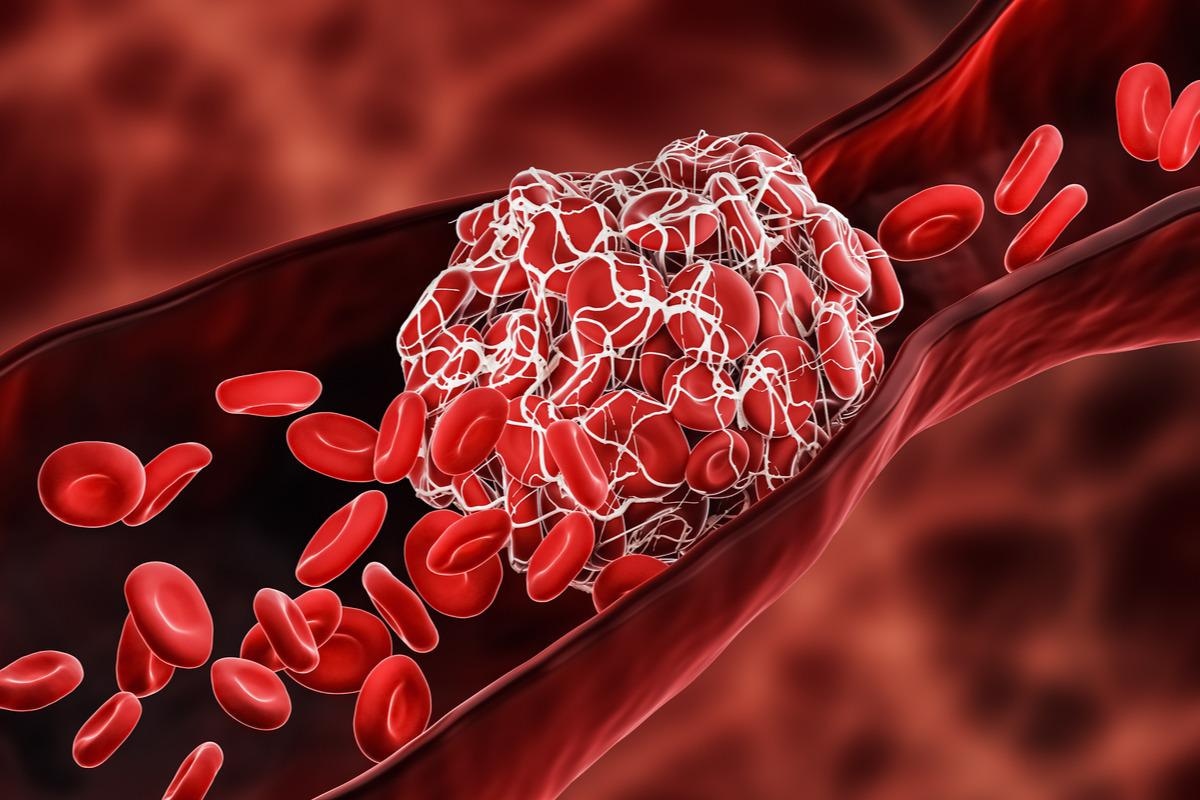Incidence of arterial and venous thromboembolism and death in COVID-19 patients

In a recent study published in Infectious Diseases, researchers estimated the incidence of arterial or venous thrombosis in patients with coronavirus disease 2019 (COVID-19).

Background
COVID-19 could cause arterial/venous thromboembolism due to inflammation, activation of platelets, endothelial dysfunction, and stasis. Various researchers have investigated the risk of venous thromboembolism in patients hospitalized due to COVID-19. However, these studies were relatively smaller, varying in sample size, setting, and definition of outcomes resulting in substantial heterogeneity. Moreover, they focused only on hospitalized COVID-19 patients, and the incidence of thrombotic events in non-hospitalized COVID-19 patients remains unknown.
Certain patient-related factors like older age, obesity, hypertension and diabetes are associated with an elevated risk of hospitalization and mortality in COVID-19. Some of these factors were previously reported to predispose people to thrombotic events. Besides, the associations between thrombotic events and COVID-19 patient characteristics have not been elucidated yet.
About the study
In the current study, researchers investigated the incidence of arterial and venous thromboembolism and mortality among patients with COVID-19. A network cohort study was conducted using healthcare data from the United Kingdom (UK), Spain, Germany, Italy, and the Netherlands. The primary analyses encompassed two cohorts; the first cohort included COVID-19-diagnosed people. The second comprised hospitalized COVID-19 patients—one year of observation time before study enrollment was required for individuals in either cohort to be eligible for primary analyses.
The index date was defined as the date of COVID-19 occurrence/testing for those in the first cohort and the date of hospitalization for those in the second cohort. For sensitivity analysis, cohorts were established based on 1) clinical diagnosis alone, 2) clinical diagnosis with less specific codes for COVID-19 identification, 3) exclusive polymerase chain reaction (PCR) testing, and 4) COVID-19 testing (both antigen and PCR tests). These cohorts were also required to have one year of observation time before inclusion in the study.
The primary outcomes were arterial or venous thrombotic events and death within 90 days after the index date. Venous thrombotic events were identified by codes of deep vein thrombosis or pulmonary embolism. Arterial thromboembolism was identified as ischemic stroke or myocardial infarction.
Cox models were used to assess the associations between prespecified variables and risk for thrombotic events and death. The cumulative incidence of study outcomes was estimated and stratified by sex and age. The effect of thrombotic events on COVID-19 outcomes was evaluated with a multistate model.
Results
The study included more than 0.9 million individuals with an index date of September 1, 2020, or later. More than 415,000 of the participants were from the UK, over 38,000 each from the Netherlands, Germany, Spain, and 25,759 from Italy. The second cohort had 32,329 hospitalized patients, all from Spain. The median age varied by region, and females outnumbered males in COVID-19 cases in the overall sample. The median age was 67 years in the second cohort, with a significant proportion of males. More than 23,200 were comorbid or previously medicated.
The 90-day cumulative incidence of venous thrombotic event in those with COVID-19 diagnosis or positive SARS-CoV-2 PCR test varied from 0.21% in the Netherlands to 0.8% in Spain, albeit it was 4.5% for those in the hospitalized cohort. Similarly, the cumulative arterial thromboembolism incidence ranged from 0.06% in the UK and Italy to 0.79% in Spain, further increasing to 3.08% among the hospitalized patients. Mortality was below 2% for those in the first cohort but increased by 14.61% among the hospitalized.
When stratified by age, arterial/venous thrombotic events and death were more prevalent in those aged 65 years or above; however, this pattern was not observed for venous thromboembolism in hospitalized patients. Males were at a higher risk for arterial thromboembolism and death, whereas males from the Netherlands, UK, and Spain but not Germany or Italy showed increased risks for venous thromboembolism.
The hazard ratios (HRs) after adjustments for sex revealed that venous thromboembolism in outpatient settings was associated with hospitalization (HR: 1.36) and death (4.42). Similarly, inpatients were associated with increased mortality risk (1.63). Outpatient arterial thrombotic events increased the risk of death (3.16), but not hospitalization, and likewise, in hospitalized settings, the risk of death was similarly higher (1.93).
Conclusions
The present study computed the incidence of thromboembolism and death among COVID-19 patients. For non-hospitalized patients, cumulative incidence of venous thromboembolism was 0.2% to 0.8% and 0.1% to 0.8% for arterial thrombotic events. The hospitalized cohort showed the highest incidence of 4.5% and 3.1% for venous and arterial thromboembolism.
Although the 90-day fatality never exceeded 2% for non-hospitalized patients, it was much higher (14.6%) for the hospitalized subjects. After adjustments, men were at a much-increased risk of thrombotic events and fatality. The findings showed that thrombotic events were associated with severe COVID-19 outcomes and mortality, underlying the need to develop strategies to reduce their incidence.
- Venous or arterial thrombosis and deaths among COVID-19 cases: a European network cohort study. (2022). Burn E, Duarte-Salles T, Fernandez-Bertolin S, et al. Infectious Diseases. doi: 10.1016/S1473-3099(22)00223-7 https://www.thelancet.com/journals/laninf/article/PIIS1473-3099(22)00223-7/fulltext
Posted in: Medical Science News | Medical Research News | Disease/Infection News
Tags: Antigen, Coronavirus, Coronavirus Disease COVID-19, covid-19, Deep Vein Thrombosis, Diabetes, Embolism, Healthcare, Infectious Diseases, Inflammation, Ischemic Stroke, Mortality, Myocardial Infarction, Obesity, Platelets, Polymerase, Polymerase Chain Reaction, Pulmonary Embolism, SARS, SARS-CoV-2, Stroke, Thromboembolism, Thrombosis, Venous Thromboembolism

Written by
Tarun Sai Lomte
Tarun is a writer based in Hyderabad, India. He has a Master’s degree in Biotechnology from the University of Hyderabad and is enthusiastic about scientific research. He enjoys reading research papers and literature reviews and is passionate about writing.
Source: Read Full Article